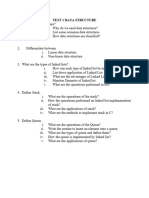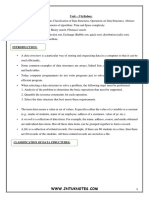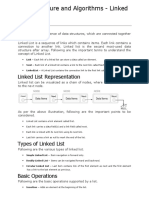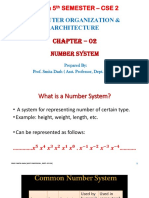0% found this document useful (0 votes)
90 views38 pagesFamilarisation of Data Structures
Data structures organize data in memory to allow for efficient operations. Common data structures include stacks, queues, and linked lists. Stacks follow a last-in, first-out principle where only the most recently added element can be removed. Queues follow a first-in, first-out principle where the earliest added element is removed first. Linked lists connect nodes containing data using links, allowing for efficient insertion and removal of elements. Basic operations on these data structures include insertion, deletion, searching, and checking emptiness or fullness.
Uploaded by
Aparna PrahladCopyright
© © All Rights Reserved
We take content rights seriously. If you suspect this is your content, claim it here.
Available Formats
Download as PDF, TXT or read online on Scribd
0% found this document useful (0 votes)
90 views38 pagesFamilarisation of Data Structures
Data structures organize data in memory to allow for efficient operations. Common data structures include stacks, queues, and linked lists. Stacks follow a last-in, first-out principle where only the most recently added element can be removed. Queues follow a first-in, first-out principle where the earliest added element is removed first. Linked lists connect nodes containing data using links, allowing for efficient insertion and removal of elements. Basic operations on these data structures include insertion, deletion, searching, and checking emptiness or fullness.
Uploaded by
Aparna PrahladCopyright
© © All Rights Reserved
We take content rights seriously. If you suspect this is your content, claim it here.
Available Formats
Download as PDF, TXT or read online on Scribd
/ 38






















































































